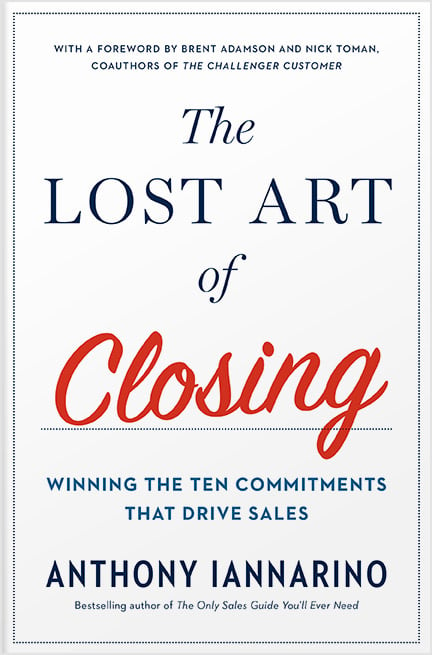Selling is a series of conversations and commitments. The more effective you are at having the necessary conversations and gaining commitments, the easier it is for you to win big deals. One of the ways you lose control of the conversation is by mishandling the objections your contacts throw at you when you ask them to agree to the conversations and commitments necessary to make a good decision about a new solution and a new partner.
You need strong skills in objection handling if you want to control the process, serve your contacts and their companies, win their business, and help them improve their results. The following framework will make it easier and more natural to overcome objections.
Recognize It’s a Concern
You must get this first step right if you want to be skilled at objection handling. However, getting this step right means changing the outcome from one of “objection handling” to “resolving concerns.” There is no doubt that much of the language your prospective clients use when you ask them to commit are objections; those objections are really used to prevent them from having to disclose their real concern.
When you call your prospective client to ask them for a first meeting, it’s common to hear something like, “Can you send me some information,” or “Can you call me back next quarter?”
Let’s say that you agreed to send the information and forgot to send your magnificent digital stack of PDFs that are all but certain to convince your client to pick up the phone and call you, even though that has never happened and likely never will. Would you worry that the client will be upset with you for failing to keep the commitment you made?
Promising and then immediately forgetting to call a prospect that asked you to call them in a quarter will not find you addressing a prospect that is angry because you didn’t call them in the following quarter. The words that you recognize your clients use to object to a commitment mask their real concern. You can’t address their real concern by addressing the words they use to express their objection, which means you need to identify what’s really behind the resistance to move forward.
Identify the Root Cause of the Concern
There is only one reason your dream client doesn’t agree to meet with you when you call them. Their reason for refusing your request for their time is that they believe it is a waste of their time. Frequent readers of this blog might notice how often I link to this video about Trading Value when asking for a meeting, a concept from The Lost Art of Closing: Winning the 10 Commitments That Drive Sales. Because most salespeople don’t even offer a value proposition when they ask for their contacts time, let alone something compelling, they receive an objection instead of a meeting.No more pushy sales tactics. The Lost Art of Closing shows you how to proactively lead your customer and close your sales. 
Prospecting, however, isn’t the only place you are going to run into objections. In B2B sales, especially the kind that lends itself to consultative selling in complex sales, your client can object to making commitments throughout the entire sales conversation. One of the most common objections you might hear will be a rejection of your request to invite other stakeholders into the conversation, knowing that they will be necessary to win the deal.
The objection often sounds like, “There is no one else we need to invite into this meeting. I will be making the decision.” Accepting this as true is to lose your deal, it dying with the usual call to tell you, “We decided to go another direction,” and you left wondering who was the “we” to which your contact was referring? The root cause of this concern could be that your contact already has a horse in this race and is preventing you from gaining a foothold with other stakeholders, potentially making it more difficult to get what they want. It is just as likely, however, that your contact doesn’t want to lose control.
One way to address this concern is to replace one concern with a better concern, one worth solving, by addressing the real risk to your client. You can explain that your experience has taught you that without the support of a broad team of people, you haven’t yet found any company that could make the kind of transformational change they needed to make. Follow that up with the promise that you will work with and through them to ensure they keep control over the initiative.
Address the Root Cause of the Concern
You are not trying to “overcome” the objection as much as you are attempting to address the root cause of their resistance to the commitment you are asking your contact to make. Because you hear the same objections repeatedly, you should have a good idea about what concerns generate certain objections. Having sold for a couple of years, you will have likely encountered all the common objections you are going to need to handle, even if you haven’t been taught or trained to address the root cause of the concern.
When someone tells you that your price is higher than your competitor’s, their concern is that they aren’t sure you are creating the additional value that would justify them paying more for your solution.
When your contact tells you they are going to speak to their team and get back with you in a few weeks, they could be expressing that they don’t believe you are the right choice for them or that they still have unaddressed concerns. They ghost you and go dark because they’d prefer not to have you try to change their minds and sell them on buying you and your solution.
One of the ways you create a preference to buy from—and work with—you is by recognizing your contact’s real concerns and effectively helping them resolve it and move forward. Being competent at overcoming objections means knowing how to have conversations about their real concerns.

Get the Free eBook!
Sales Call Planner Guide
Your dream client expects you to know how to help them and what that process should look like. Execute your best sales calls with this free sales call planner!
Download Now







.jpg?width=768&height=994&name=salescall-planner-ebook-v3-1-cover%20(1).jpg)


